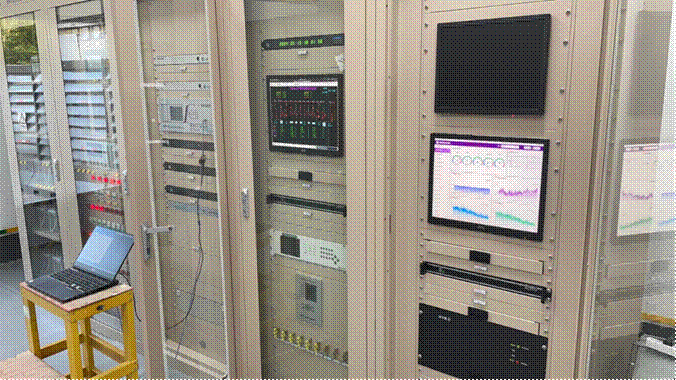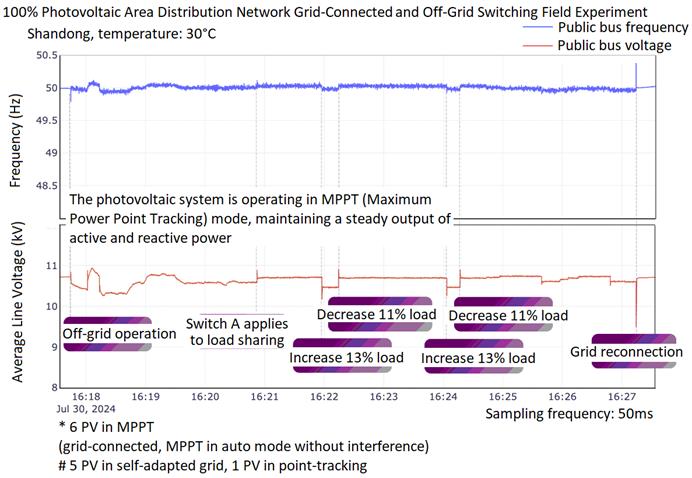Recently, leveraging the national key research and development program “Key Technologies for Adaptive Grid Connection and Active Synchronization of Ultra-High Penetration Distributed Photovoltaic Power Generation,” Professor Wu Wenchuan’s team from the Department of Electrical Engineering and Applied Electronics (EEA), Tsinghua University, in collaboration with State Grid Shandong Electric Power Company, made significant progress in the technology of adaptive grid formation for new energy with multi-machine coordinated operation. Under the witness of experts during the mid-project review, the team successfully achieved the first 100% distributed photovoltaic park microgrid (without conventional power support) capable of switching between grid-connected and island operation with stable performance.
Theoretically, new energy connected to the grid using grid formation technology can present good voltage source characteristics to the outside, providing synchronous voltage and frequency support, which is fundamental for the stable operation of a new power system with a high proportion of renewable energy. However, most existing grid formation technologies are based on phasor measurements simulating synchronous machines from a single machine perspective, which leads to issues such as slow dynamic response and instability in multi-machine operations, primarily applied to energy storage systems.
The team developed adaptive grid formation technology suitable for the coordinated operation of multiple new energy machines, capable of self-adapting to large disturbances such as abrupt changes in DC side voltage, grid-side faults, and load changes, achieving millisecond-level real-time response with global synchronous stability. This technology addresses the instability issues common in multi-machine coordinated grid operations. Under grid-connected conditions, adaptive grid formation technology can actively synchronize to the grid, providing voltage and frequency support to the power grid while being compatible with maximum power point tracking mode (referred to as MPPT grid formation). Under off-grid conditions, the technology supports multi-machine coordinated grid formation operation, activating distributed power sources within the region to jointly support the stable operation of the microgrid, replacing the traditional master-slave structure.
This adaptive grid formation technology is applicable to photovoltaic systems, wind turbines, energy storage, static VAR generators (SVG), and flexible DC transmission, and can be widely used in (ultra) high-penetration distributed photovoltaic distribution networks and large-scale new energy bases such as those in “Desert, Gobi and Wasteland.” It enables renewable energy to transition from being a “negative load” to a “power source,” achieving proactive synchronization support for the power grid.

On-Site Deployment of Photovoltaic Generation Cluster Controller
Field tests demonstrated that, on one hand, the adaptive grid formation technology developed by the team allows distributed photovoltaic generation to provide millisecond-level instantaneous power support, exhibiting superior active synchronization grid formation characteristics. On the other hand, based on the team’s developed real-time control technology for new energy clusters, feedback optimization, dynamic modal decomposition, and model predictive control methods were implemented, enabling dynamic fitting of the cluster model under time-varying operating conditions. This self-adapting coordination of distributed photovoltaic generation equipment within the cluster significantly enhances the overall expected frequency and voltage support characteristics provided to the grid, thereby greatly improving the operational stability of the microgrid. Under grid-connected conditions, this technology can enable new energy clusters to provide significant active support capabilities.

Real-Time Voltage and Frequency Waveform Records during Switching and Island Operation of the 100% Photovoltaic Park Microgrid

















 News & Events
News & Events